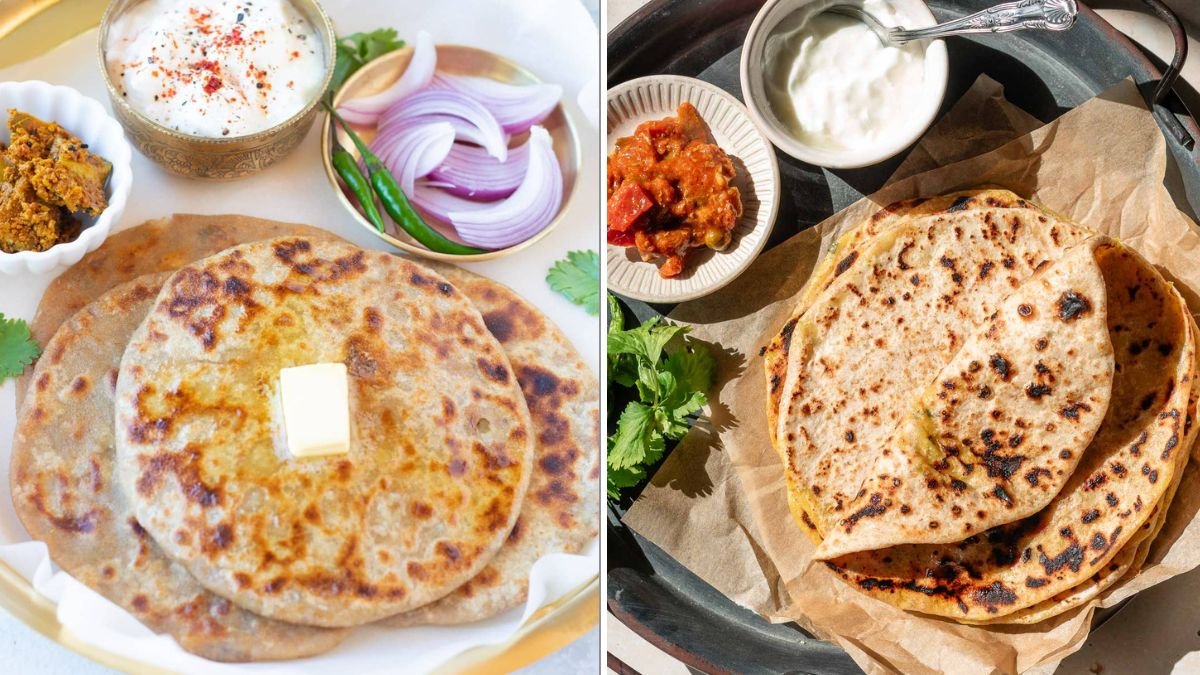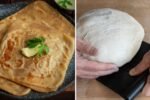Aloo Paratha is one of India’s most beloved comfort foods. It’s a stuffed flatbread with a spiced potato filling, cooked to golden perfection on a hot griddle. The combination of soft, flaky bread and savory, flavorful potato filling makes it an irresistible dish for breakfast, brunch, or even dinner. While many attempt to make aloo paratha at home, achieving the perfect softness with flaky layers requires attention to technique, ingredients, and timing.
This guide provides a 5-step approach to making aloo paratha soft and flaky, so you can enjoy restaurant-quality parathas in your own kitchen.
Ingredients You’ll Need
The key to perfect aloo paratha lies in choosing fresh ingredients and balancing the spices in the filling.
For the Dough:
- 2 cups whole wheat flour (atta)
- 1/2 teaspoon salt
- 1 teaspoon oil or ghee
- Water as needed (approximately 3/4 cup)
For the Potato Filling:
- 2 medium potatoes, boiled and mashed
- 1 small onion, finely chopped
- 2 green chilies, finely chopped (optional, for spice)
- 1 teaspoon grated ginger
- 1/2 teaspoon cumin seeds
- 1/2 teaspoon red chili powder
- 1/2 teaspoon garam masala
- Salt, to taste
- 2 tablespoons fresh coriander leaves, chopped
- Optional: 1/4 teaspoon amchur powder (dry mango powder) for tang
For Cooking:
- Ghee or oil for frying
Having all ingredients ready before starting ensures a smooth process and consistent results.
Step 1: Preparing the Dough
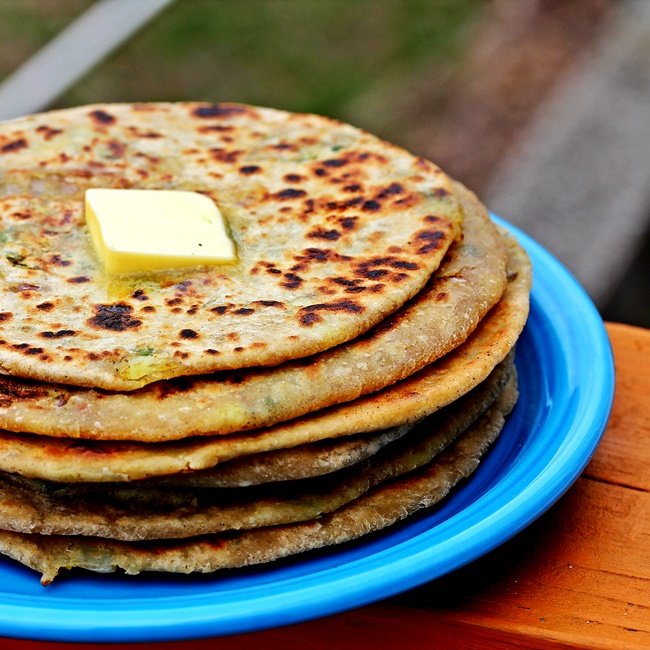
The dough is the foundation for soft and flaky aloo parathas. Proper kneading and resting are key.
Instructions:
- In a large bowl, combine whole wheat flour and salt.
- Add 1 teaspoon of oil or ghee. This helps make the dough soft and adds slight flakiness.
- Gradually add water, little by little, and knead into a soft, pliable dough.
- Cover the dough with a damp cloth and let it rest for at least 20–30 minutes.
Tips:
- Resting the dough allows the gluten to relax, making rolling easier and the paratha softer.
- Knead until smooth; a stiff dough will result in hard parathas.
Step 2: Preparing the Potato Filling
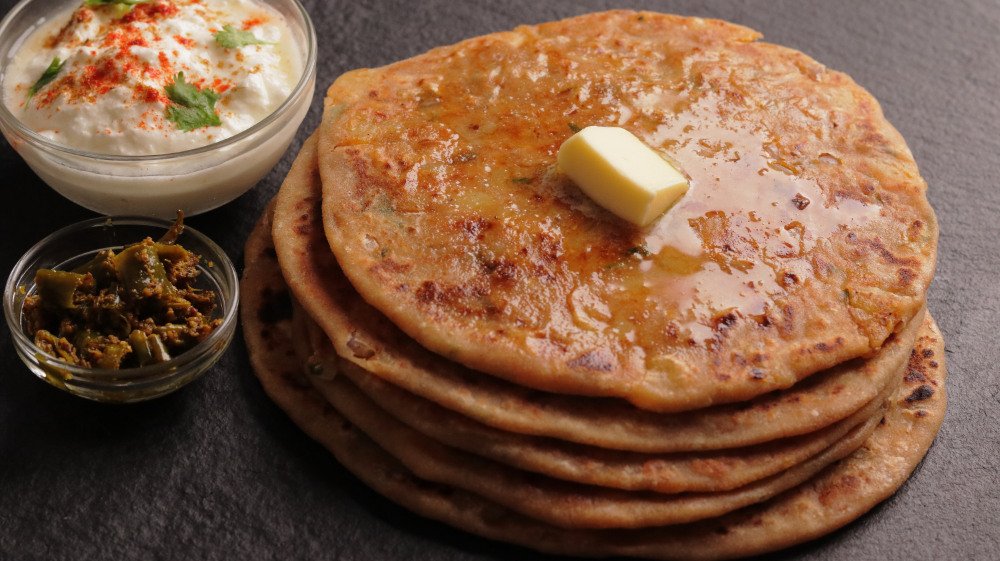
A flavorful, well-spiced filling is the soul of aloo paratha.
Instructions:
- Boil potatoes until tender, peel, and mash them in a bowl.
- Add finely chopped onion, green chilies, grated ginger, and coriander leaves.
- Season with cumin seeds, red chili powder, garam masala, salt, and optional amchur powder.
- Mix everything thoroughly to ensure an even blend of spices and mashed potatoes.
Tips:
- Avoid watery potatoes; excess moisture can make stuffing difficult and the paratha soggy.
- Taste the filling and adjust spices according to your preference.
Step 3: Stuffing the Paratha
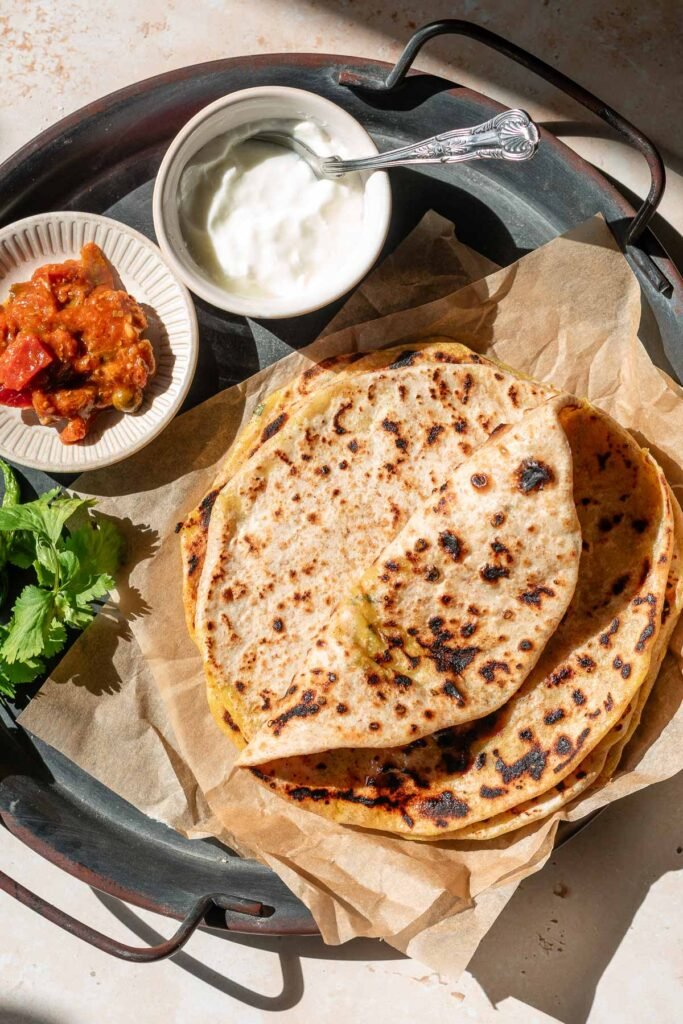
Proper stuffing and sealing prevent the filling from leaking and help in achieving an even, soft texture.
Instructions:
- Divide the dough into equal-sized balls, roughly the size of a golf ball.
- Roll each dough ball into a small disc, about 4 inches in diameter.
- Place a portion of the potato filling in the center.
- Bring the edges together and pinch to seal completely.
- Gently flatten and roll again into a circle, 6–7 inches in diameter, without pressing too hard to avoid spilling the filling.
Tips:
- Lightly dust the rolling surface with flour to prevent sticking.
- Keep the pressure gentle while rolling to maintain softness.
Step 4: Cooking the Paratha
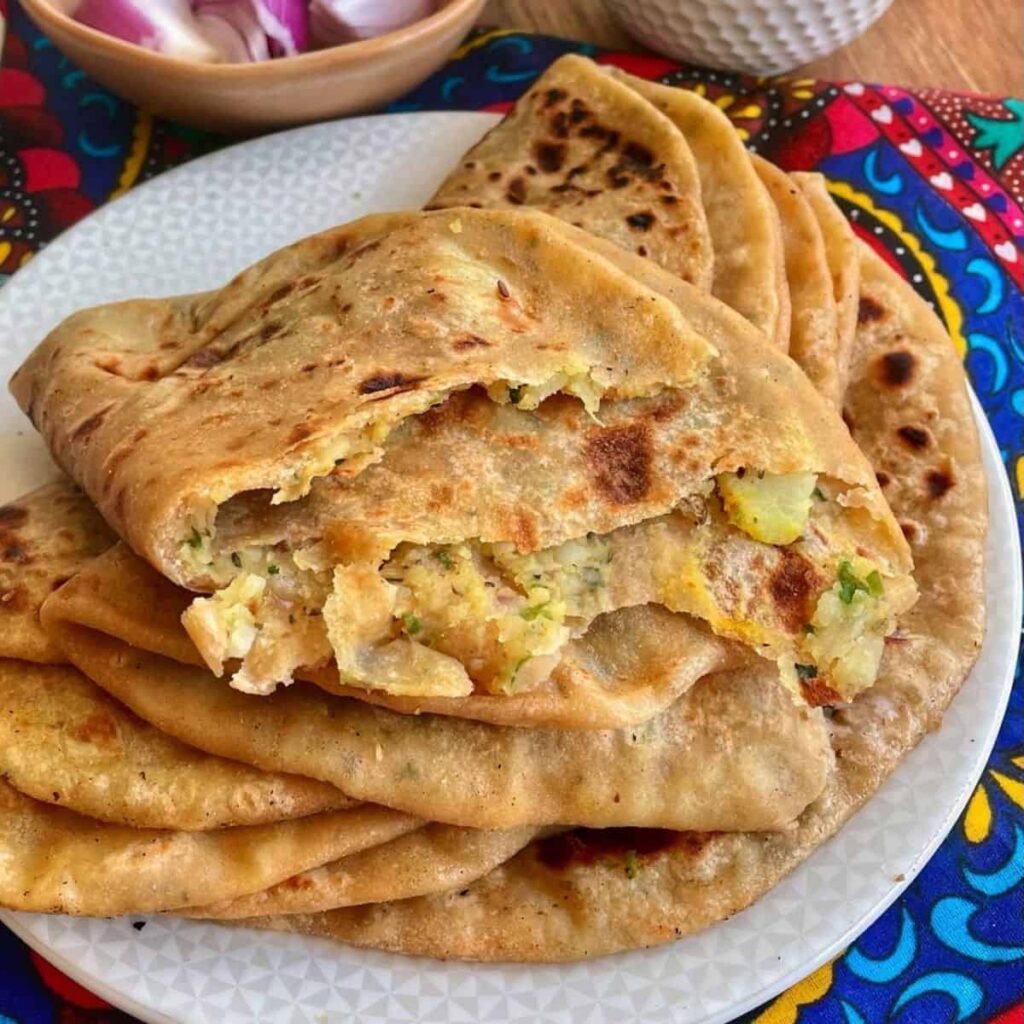
Cooking correctly on medium heat ensures golden, flaky layers and a soft texture.
Instructions:
- Heat a tawa or non-stick pan over medium heat.
- Place the rolled paratha on the hot surface. Cook for 1–2 minutes until small bubbles appear.
- Flip and apply ghee or oil on the cooked side. Cook for another 1–2 minutes.
- Flip again and apply ghee on the other side. Cook until both sides are golden brown with slight crispy edges.
- Press gently with a spatula to ensure even cooking and slight puffing.
Tips:
- Medium heat prevents burning while ensuring the inside is cooked through.
- Avoid high heat; the paratha may brown outside while remaining uncooked inside.
Step 5: Serving and Enjoying
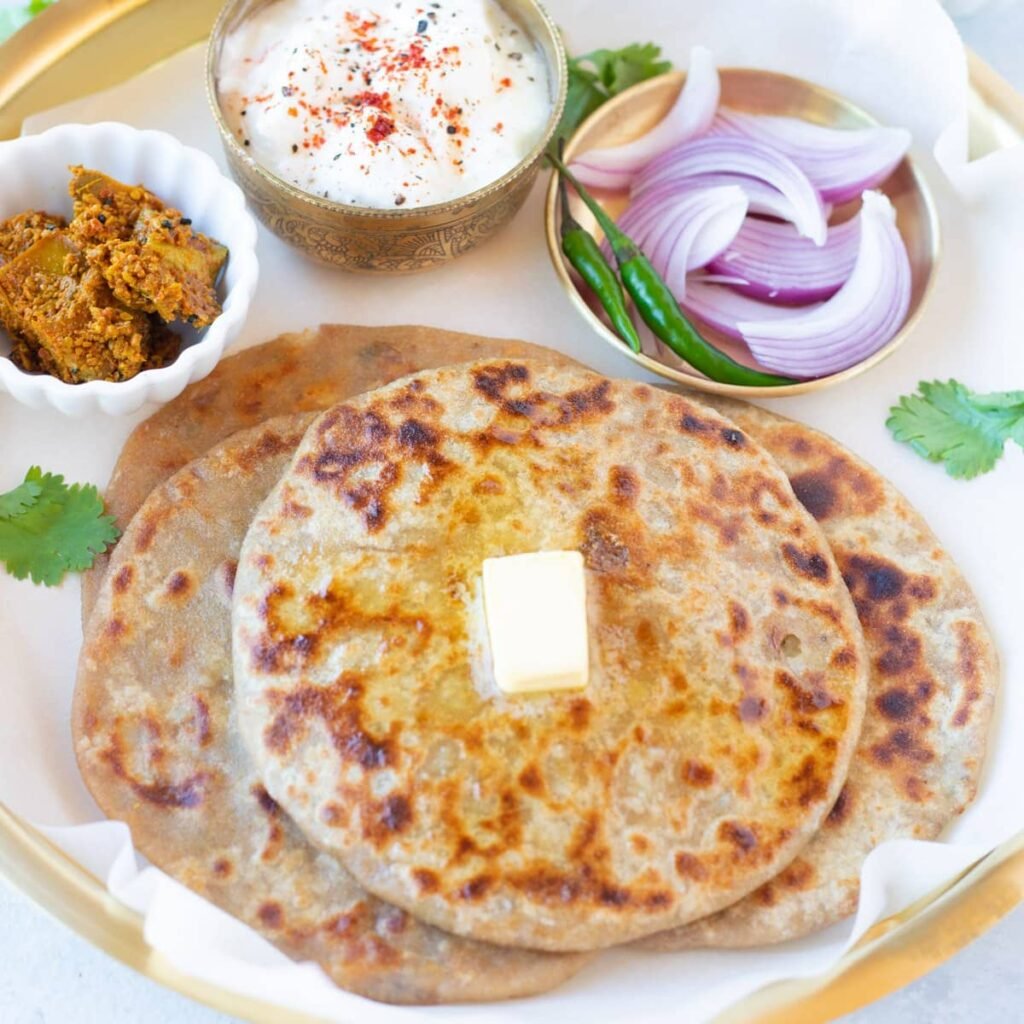
Presentation and accompaniments elevate the paratha experience.
Instructions:
- Serve aloo paratha hot from the tawa or griddle.
- Accompany with yogurt, butter, pickles, or chutney.
- Optionally, drizzle a little ghee on top for extra richness.
Tips:
- Parathas are best enjoyed immediately for maximum softness.
- If storing for later, wrap in a clean cloth to keep them warm and soft.
Additional Tips for Soft and Flaky Aloo Paratha
- Dough Softness: Adding a little ghee while kneading enhances softness and flakiness.
- Resting Time: Do not skip resting the dough; it ensures easy rolling and softer parathas.
- Potato Texture: Mash potatoes thoroughly but avoid making them watery.
- Cooking Technique: Cook on medium heat; flip gently and evenly apply ghee for golden layers.
- Optional Flavors: Add finely chopped green chilies or herbs like mint for variation.
- Layering Trick: For extra flakiness, roll the dough lightly, fold it like an envelope, and roll again before stuffing.
Health Benefits of Aloo Paratha
- Energy-Rich: Provides a balanced mix of carbohydrates from potatoes and whole wheat flour.
- Vegetables and Herbs: Potatoes, onions, and coriander contribute vitamins, minerals, and antioxidants.
- Protein (if served with yogurt): Adding yogurt or raita complements the meal with protein and probiotics.
- Satiating: Aloo paratha is filling and provides sustained energy, making it ideal for breakfast or brunch.
Why Aloo Paratha Is a Favorite
Aloo paratha is cherished for its comforting taste, soft texture, and versatility:
- Perfect for breakfast, brunch, or even dinner.
- Can be paired with a variety of sides: yogurt, pickles, chutney, or butter.
- Loved by both kids and adults for its mild, flavorful filling.
- Easy to make in large batches for family meals or special occasions.
The combination of a soft, flaky flatbread with aromatic, spiced potato filling makes aloo paratha an unbeatable comfort food.
Conclusion
Preparing soft and flaky aloo paratha at home is easy if you follow these five steps—preparing dough, making potato filling, stuffing paratha, cooking carefully, and serving immediately.
The key to success lies in:
- Kneading soft, pliable dough
- Using well-cooked, slightly dry potato filling
- Rolling gently without pressing too hard
- Cooking on medium heat with proper ghee application
By mastering these techniques, you can make restaurant-quality aloo parathas at home that are soft, golden, and bursting with flavor. Serve them with yogurt, butter, pickles, or chutney for a perfect Indian meal that’s sure to delight family and friends.
